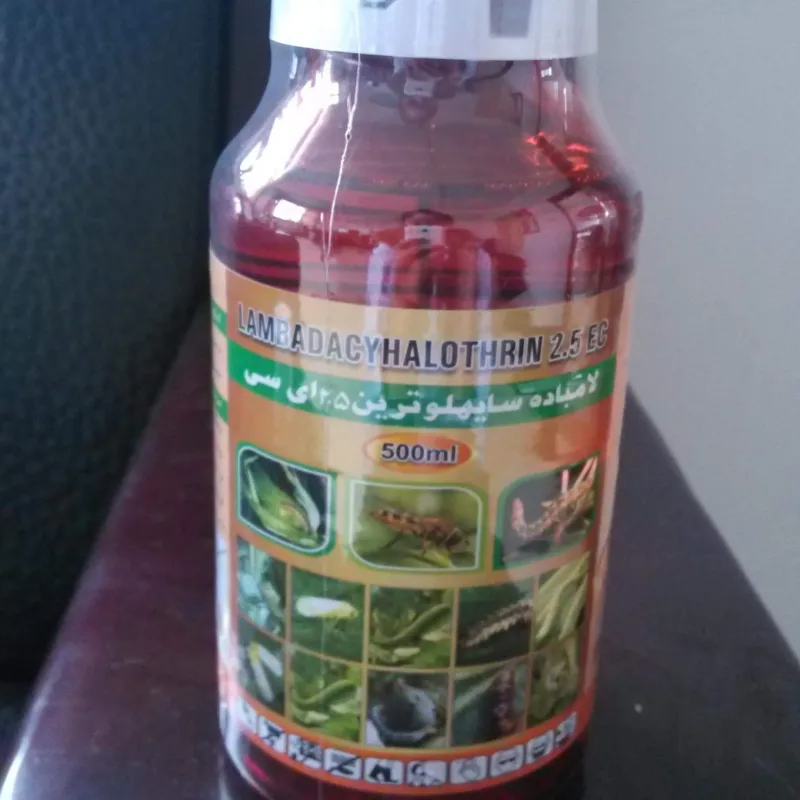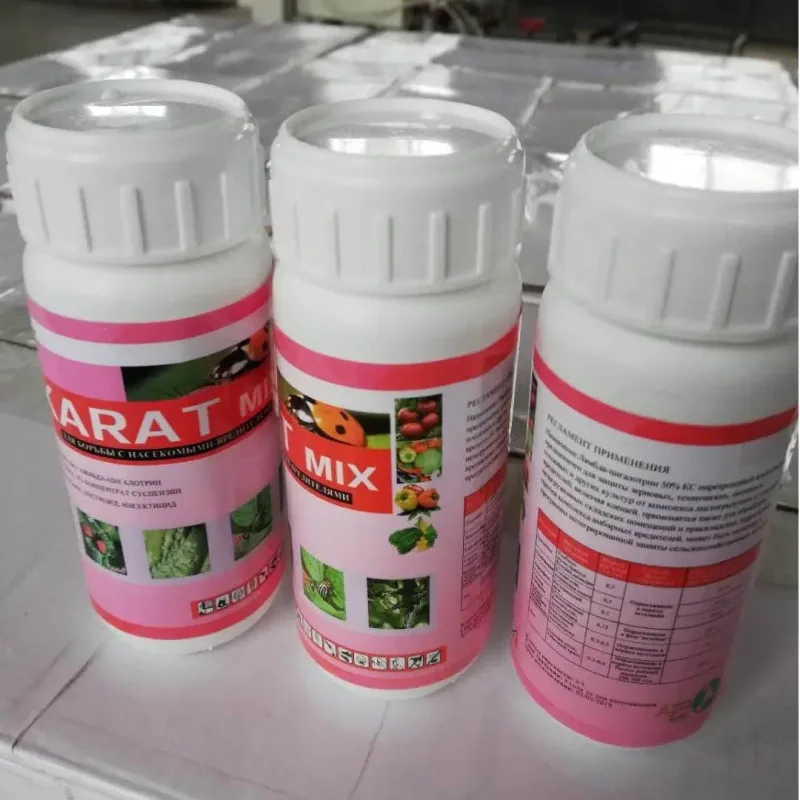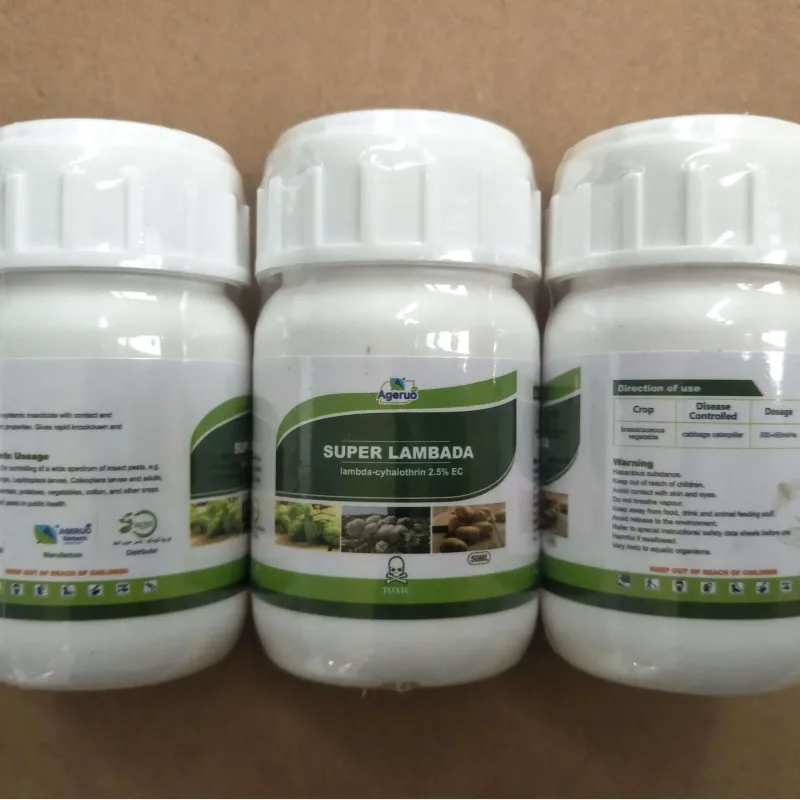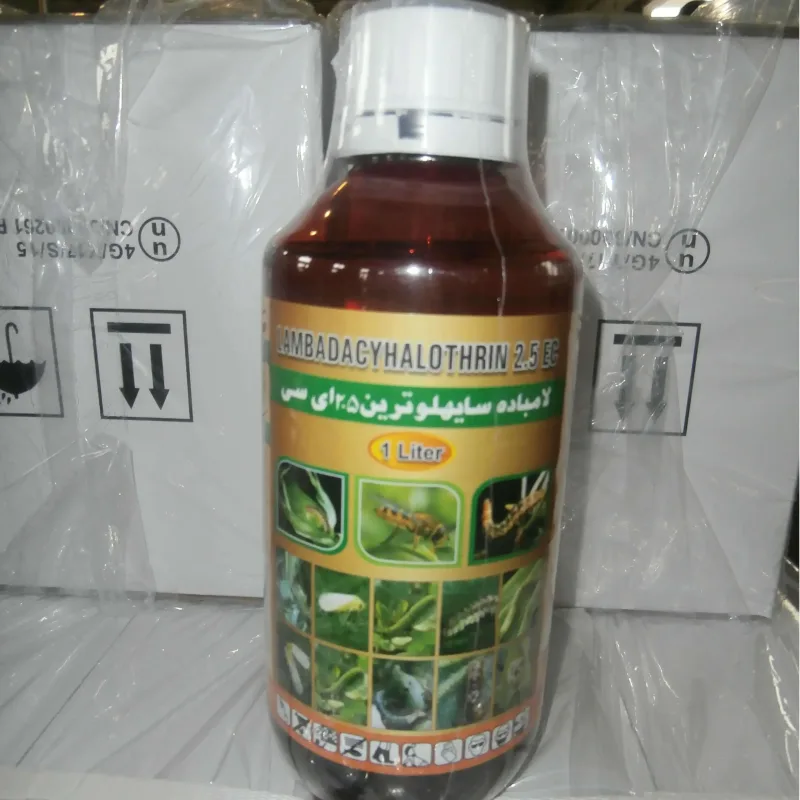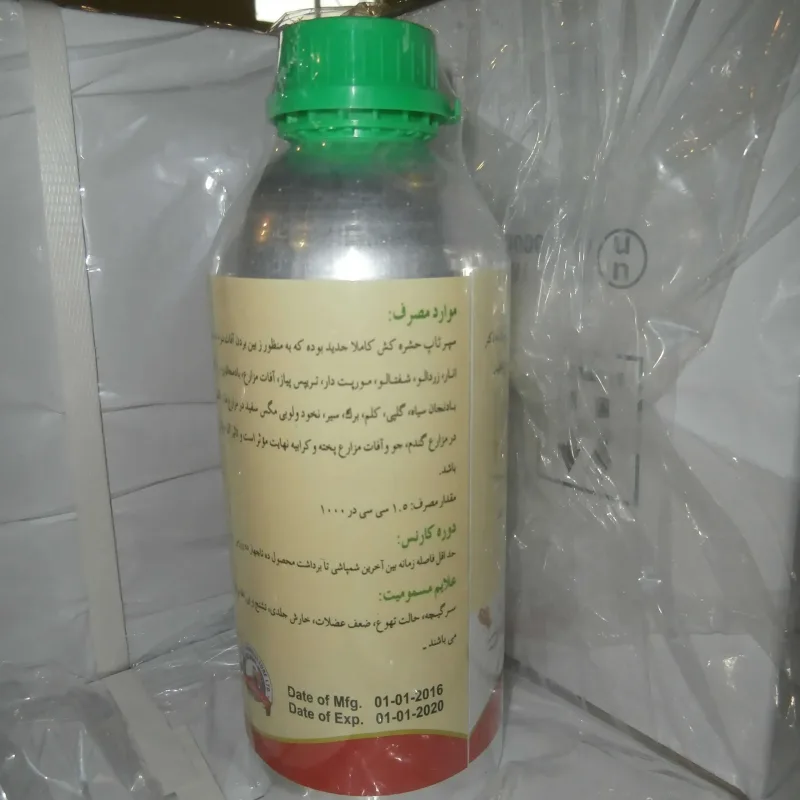Is Lambda-Cyhalothrin Safe?
Lambda-Cyhalothrin is a widely used insecticide in agriculture, known for its powerful action against a wide range of pests. However, like many pesticides, it raises concerns regarding its safety, particularly in relation to humans, pets, and the environment. In this article, we will address the safety of Lambda-Cyhalothrin, exploring whether it’s safe for humans, pets, bees, and even vegetable gardens. We will also discuss how to use it responsibly to avoid harmful effects.
What is Lambda-Cyhalothrin?
Lambda-Cyhalothrin is a synthetic pyrethroid insecticide that works by disrupting the nervous system of insects, leading to paralysis and death. It is commonly used to control pests in crops such as cotton, corn, and vegetables, as well as in household settings to combat ants and other common pests.
Is Lambda-Cyhalothrin Safe?
Lambda-Cyhalothrin is considered safe when used according to the instructions on the label. Its safety profile has been extensively studied, with regulatory bodies such as the U.S. Environmental Protection Agency (EPA) and the European Food Safety Authority (EFSA) approving its use in various applications. However, like any chemical, it can pose risks if not handled properly.
It is important to follow recommended safety guidelines, including proper protective equipment when applying the insecticide and adhering to the recommended usage rates. If used irresponsibly, Lambda-Cyhalothrin can have adverse effects on both human health and the environment.
Is Lambda-Cyhalothrin Toxic to Cats and Dogs?
One of the primary concerns with any pesticide is its potential toxicity to household pets, especially cats and dogs. Lambda-Cyhalothrin can be toxic to pets if ingested, inhaled, or absorbed through their skin. Pets that come into contact with freshly treated areas can experience symptoms such as drooling, vomiting, or even more severe reactions in extreme cases.
To ensure Lambda-Cyhalothrin pet safety, keep pets away from treated areas until the product has dried completely. If your pet has been exposed, contact your veterinarian immediately for advice on how to proceed. Pet owners should also avoid spraying areas that their pets frequent, such as bedding or areas where they eat.
Is Lambda-Cyhalothrin Toxic to Humans?
When used according to label instructions, Lambda-Cyhalothrin is not considered toxic to humans. However, direct exposure to the chemical can lead to mild symptoms such as skin irritation, headaches, or dizziness. In rare cases, prolonged or high-level exposure may cause more severe effects.
For safety, always wear protective clothing, gloves, and a mask when applying Lambda-Cyhalothrin. Wash your hands thoroughly after handling the product and avoid inhaling the spray directly. If there is accidental exposure, wash the affected area immediately with soap and water.
Is Lambda-Cyhalothrin Safe for Bees?
Lambda-Cyhalothrin is highly toxic to bees and other pollinators, which are essential for the health of many agricultural crops. Bees are particularly sensitive to pyrethroids, including Lambda-Cyhalothrin. It’s crucial to apply this insecticide during times when bees are less active, such as early in the morning or late in the evening.
If you are concerned about the impact of Lambda-Cyhalothrin on bees, consider using alternative insecticides that are less harmful to pollinators, or take measures to protect nearby pollinators, such as covering flowering plants during application.
Is Lambda-Cyhalothrin Safe for Vegetable Gardens?
Lambda-Cyhalothrin can be safely used in vegetable gardens, but it is important to follow all safety guidelines to ensure it does not contaminate the crops. Always check the label to ensure that the product is approved for use on edible plants and follow the recommended pre-harvest intervals to avoid pesticide residues on your vegetables.
For those concerned about the impact of chemicals on their food, using Lambda-Cyhalothrin sparingly and during off-peak hours can help minimize exposure to beneficial insects and ensure that crops remain safe to eat.
Lambda-Cyhalothrin Pet Safety Tips
When using Lambda-Cyhalothrin in areas where pets frequent, there are several precautions to take:
- Always read and follow the label instructions carefully.
- Keep pets away from treated areas until the product has dried completely.
- Store products in secure areas away from pets to avoid accidental exposure.
- In the case of accidental exposure, consult a veterinarian immediately.
Conclusion
In conclusion, Lambda-Cyhalothrin is a highly effective insecticide when used correctly, but like any chemical, it comes with risks. To ensure safety, it is important to follow all application guidelines, especially when using the product in areas where pets, humans, and beneficial insects such as bees are present.
For pet owners, it is crucial to take extra precautions to ensure Lambda-Cyhalothrin pet safety by keeping pets away from treated areas and applying the product responsibly. For gardeners, Lambda-Cyhalothrin can be used safely on vegetable crops, but it’s essential to observe pre-harvest intervals and minimize exposure to non-target species.
By following these safety tips, Lambda-Cyhalothrin can be used effectively while minimizing any risks to your pets, family, and the environment.
Contact Us for More Information
If you’re interested in purchasing Lambda-Cyhalothrin or would like more information about its safe use, please contact us for detailed product specifications, pricing, and shipping information.
This page discusses the following issues, if you still have questions you can ask us, in addition, if you need samples you can also apply for free samples of a total of tests and experiments.
is lambda cyhalothrin safe
is lambda cyhalothrin toxic to cats
is lambda cyhalothrin toxic to dogs
is lambda cyhalothrin toxic to humans
is lambda cyhalothrin safe for bees
is lambda cyhalothrin safe for pets
is lambda cyhalothrin safe for vegetable gardens
lambda cyhalothrin pet safety
Lambda-Cyhalothrin is a widely used insecticide in agriculture, known for its powerful action against a wide range of pests. However, like many pesticides, it raises concerns regarding its safety, particularly in relation to humans, pets, and the environment. In this article, we will address the safety of Lambda-Cyhalothrin, exploring whether it’s safe for humans, pets, bees, and even vegetable gardens. We will also discuss how to use it responsibly to avoid harmful effects.
What is Lambda-Cyhalothrin?
Lambda-Cyhalothrin is a synthetic pyrethroid insecticide that works by disrupting the nervous system of insects, leading to paralysis and death. It is commonly used to control pests in crops such as cotton, corn, and vegetables, as well as in household settings to combat ants and other common pests.
Is Lambda-Cyhalothrin Safe?
Lambda-Cyhalothrin is considered safe when used according to the instructions on the label. Its safety profile has been extensively studied, with regulatory bodies such as the U.S. Environmental Protection Agency (EPA) and the European Food Safety Authority (EFSA) approving its use in various applications. However, like any chemical, it can pose risks if not handled properly.
It is important to follow recommended safety guidelines, including proper protective equipment when applying the insecticide and adhering to the recommended usage rates. If used irresponsibly, Lambda-Cyhalothrin can have adverse effects on both human health and the environment.
Is Lambda-Cyhalothrin Toxic to Cats and Dogs?
One of the primary concerns with any pesticide is its potential toxicity to household pets, especially cats and dogs. Lambda-Cyhalothrin can be toxic to pets if ingested, inhaled, or absorbed through their skin. Pets that come into contact with freshly treated areas can experience symptoms such as drooling, vomiting, or even more severe reactions in extreme cases.
To ensure Lambda-Cyhalothrin pet safety, keep pets away from treated areas until the product has dried completely. If your pet has been exposed, contact your veterinarian immediately for advice on how to proceed. Pet owners should also avoid spraying areas that their pets frequent, such as bedding or areas where they eat.
Is Lambda-Cyhalothrin Toxic to Humans?
When used according to label instructions, Lambda-Cyhalothrin is not considered toxic to humans. However, direct exposure to the chemical can lead to mild symptoms such as skin irritation, headaches, or dizziness. In rare cases, prolonged or high-level exposure may cause more severe effects.
For safety, always wear protective clothing, gloves, and a mask when applying Lambda-Cyhalothrin. Wash your hands thoroughly after handling the product and avoid inhaling the spray directly. If there is accidental exposure, wash the affected area immediately with soap and water.
Is Lambda-Cyhalothrin Safe for Bees?
Lambda-Cyhalothrin is highly toxic to bees and other pollinators, which are essential for the health of many agricultural crops. Bees are particularly sensitive to pyrethroids, including Lambda-Cyhalothrin. It’s crucial to apply this insecticide during times when bees are less active, such as early in the morning or late in the evening.
If you are concerned about the impact of Lambda-Cyhalothrin on bees, consider using alternative insecticides that are less harmful to pollinators, or take measures to protect nearby pollinators, such as covering flowering plants during application.
Is Lambda-Cyhalothrin Safe for Vegetable Gardens?
Lambda-Cyhalothrin can be safely used in vegetable gardens, but it is important to follow all safety guidelines to ensure it does not contaminate the crops. Always check the label to ensure that the product is approved for use on edible plants and follow the recommended pre-harvest intervals to avoid pesticide residues on your vegetables.
For those concerned about the impact of chemicals on their food, using Lambda-Cyhalothrin sparingly and during off-peak hours can help minimize exposure to beneficial insects and ensure that crops remain safe to eat.
Lambda-Cyhalothrin Pet Safety Tips
When using Lambda-Cyhalothrin in areas where pets frequent, there are several precautions to take:
- Always read and follow the label instructions carefully.
- Keep pets away from treated areas until the product has dried completely.
- Store products in secure areas away from pets to avoid accidental exposure.
- In the case of accidental exposure, consult a veterinarian immediately.
Conclusion
In conclusion, Lambda-Cyhalothrin is a highly effective insecticide when used correctly, but like any chemical, it comes with risks. To ensure safety, it is important to follow all application guidelines, especially when using the product in areas where pets, humans, and beneficial insects such as bees are present.
For pet owners, it is crucial to take extra precautions to ensure Lambda-Cyhalothrin pet safety by keeping pets away from treated areas and applying the product responsibly. For gardeners, Lambda-Cyhalothrin can be used safely on vegetable crops, but it’s essential to observe pre-harvest intervals and minimize exposure to non-target species.
By following these safety tips, Lambda-Cyhalothrin can be used effectively while minimizing any risks to your pets, family, and the environment.
Contact Us for More Information
If you’re interested in purchasing Lambda-Cyhalothrin or would like more information about its safe use, please contact us for detailed product specifications, pricing, and shipping information.
This page discusses the following issues, if you still have questions you can ask us, in addition, if you need samples you can also apply for free samples of a total of tests and experiments.
is lambda cyhalothrin safe
is lambda cyhalothrin toxic to cats
is lambda cyhalothrin toxic to dogs
is lambda cyhalothrin toxic to humans
is lambda cyhalothrin safe for bees
is lambda cyhalothrin safe for pets
is lambda cyhalothrin safe for vegetable gardens
lambda cyhalothrin pet safety


